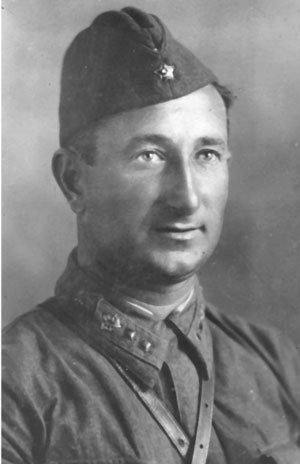The patriotic campaign "Scientific Regiment" is carried out by the Ministry of Science and Higher Education of the RF together with subordinate higher educational institutions and scientific organizations.
Under the project, the media resources of the Russian Ministry of Education and Science, higher educational institutions and scientific organizations publish stories about students, teachers and scientists who contributed to the defeat of the enemy during the Great Patriotic War. This was not only participation in battles on the fields, but also research, technical solutions that brought victory closer.
Eighty years ago, in March 1943, the legendary Road of Life stopped operating. From 12 September, 1941 to March 1943, it was the only transport route that connected besieged Leningrad with the country. Leonid Galperin, a Soviet architect, graduate of the Leningrad Institute of Civil Enginering (now SPbGASU) of 1931, served on one of the most difficult sections of this route.
 Leonid Galperin
Leonid GalperinAfter graduation, Leonid Galperin worked as an architect in a design and construction organization in Leningrad. He was drafted into the army in the early days of the war. From November 1941, for five months, he carried out front-line service as a company commander of the 64th road maintenance regiment on a military highway, whose heroic fate is known to the whole world. It was then that the route was laid from the village of Kobona to the village of Kokkorevo on the ice of Lake Ladoga, which saved the lives of many Leningraders.
On 16 November, Galperin's company took to the ice. A blizzard began, the fighters tied ropes to each other so as not to slip, fell, got up, fell again, several people drowned, some were pulled out and saved. Only on the second day, having covered 18 km and falling on their feet, they reached the Zelentsy Islands. Thus began the service of Leonid Galperin on the road, which would later be called the Road of Life.
Cargoes were transported along the ice road in one direction, and people were transported in the opposite direction. The operation of the ice road was new for the fighters. There were no specialists familiar with such work. They had to master the technique on the go, look for solutions to emerging problems. In severe frost, in a blizzard, under shelling and bombing, the soldiers ensured the smooth operation of the road: they prevented snow drifts, downtime and “traffic jams” of cars on the road, built bridges over cracks, indicated to drivers the direction of movement and bypassing polynyas, increased the thickness of the ice, watering the road. Traffic controllers did not leave their posts for days. There were times when cars fell through the ice. Being waist-deep in icy water, the fighters selflessly saved people, cars and cargo.
Galperin used to say: "Ice has become earth for us."
The last trip on the ice road in 1942 took place on 30 April. It was a caravan of 36 bow carts. On this, the service of Leonid Galperin on the Road of Life ended. Later, as a military engineer, he participated in organizing crossings to the Oranienbaum bridgehead, in breaking the blockade of Leningrad, and reached Berlin as a lieutenant colonel. In the defeated enemy capital, according to his project, the first Triumphal Arch of Victory was built from wood. He was awarded two Orders of the Patriotic War, the Order of the Red Star and medals, including "For Military Merit", "For Labour Valor", "For the Defense of Leningrad", "For the Capture of Berlin", "For the Capture of Koenigsberg", "For the Victory over Germany".
In 1946, Leonid Galperin headed the architectural workshop at the Lengiprokommunstroy Institute. He designed residential buildings, institutions, hotels. In 1978, for the project of the Orlyonok pioneer camp in the Krasnodar Territory, he was awarded the State Prize of the RSFSR.
On the initiative and under the leadership of Leonid Galperin, the Museums of the Road of Life were created in the village of Kokkorevo, Vsevolozhsk District, Leningrad Region, and at School No. 303, Frunzensky District, Leningrad. In 1994, he published a book of memoirs "The Heroic Epic of the Road of Life", a year later - the book "From Ladoga to Elba".